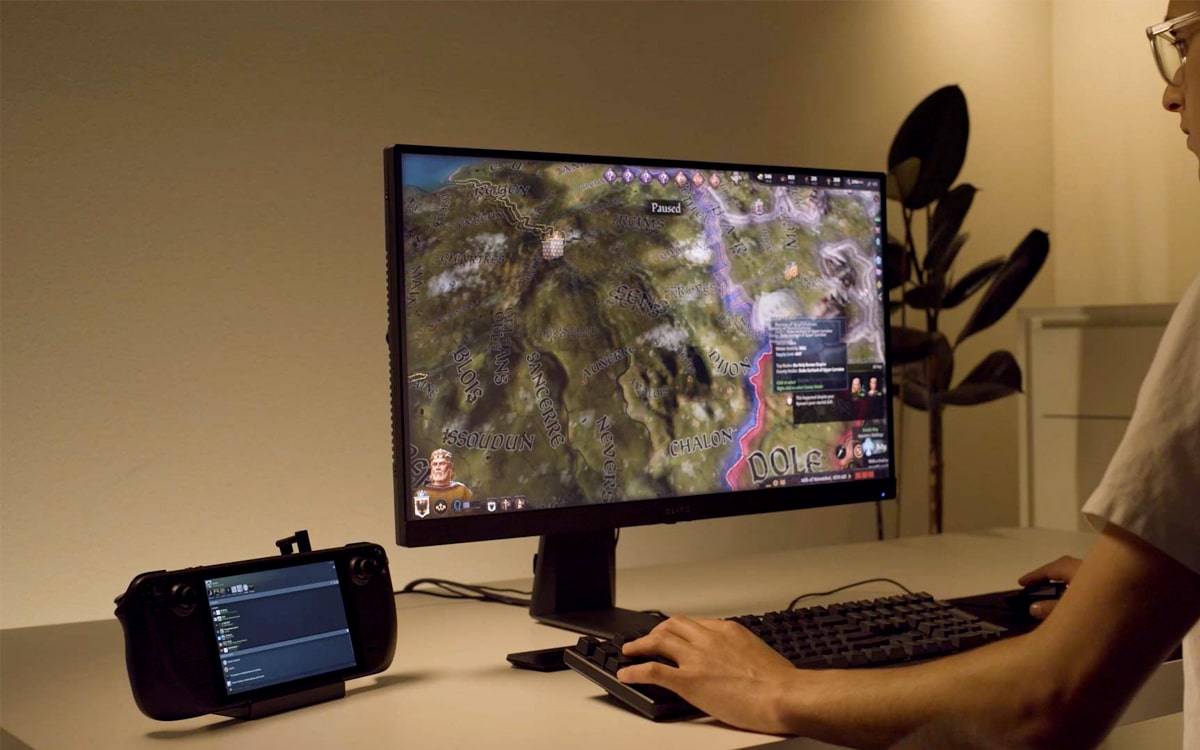For PC gamers, frames per second (FPS) is a crucial metric for knowing how your computer performs in-game. Here’s a guide that should help you see this rate, no matter what game you’re playing .

If you play on PC, at some point you may want to know the number of frames per second of your game whether to ensure that the title is fluid enough and optimize the graphics settings accordingly, or to know the performance of your graphics card.
What are FPS?
FPS is an indicator of how many frames your computer can display per second. Higher frame rates translate to smoother on-screen movements, which is especially important in fast-paced games where quick reactions are essential.
If you’re gaming on a 60Hz monitor, remember that aiming for more than 60 frames per second won’t provide any noticeable benefits, as it means the screen won’t be able to display more frames per second. second. It is therefore better to make sure that your graphics card is capable of generating as many images per second as the refresh rate of your screen. We will therefore explain to you step by step how to display them on the screen.
Show FPS using Steam
Steam offers its own built-in FPS counter that is both easy to use and non-intrusive. Here’s how to activate it:
- Open the Steam application, click “ Steam» in the upper left corner and select “ Settings “.


- Click on ” Stake » in the sidebar, then find the “ In-game FPS counter“.


- Choose where on the screen you want the FPS counter to appear. The options provided are located in each corner of the screen.
- After selecting the location of your choice, the FPS counter will be activated. It’s a small window that shouldn’t disrupt your gaming experience too much.
This method will therefore be very practical for displaying the FPS of games via Steam, and we remind you that you can add non-Steam games to your library which allows you to use the FPS counter with all your favorite titles . To do this, go to your Library on Steamand click at the bottom left on “ Add a game “, Then ” Add a non-Steam game “. Then click on “ Browse ”, then find the .exe file for the title you want to add to the Steam library.
Show FPS from Game Bar on Windows 11
If you don’t use Steam, know that Windows 11 has an integrated feature dedicated to gaming, called Game Bar. The latter is essentially a quick menu allowing you to access various options for games, but also allows you to check the number of frames per second on a game. Here’s how to use this feature:
- Press on Win+G when you are in the game to open the game bar.
- Click the Performance icon, which looks like a heart rate monitor, to view your system’s performance.


- To constantly monitor FPS, pin the Performance panel by clicking on the icon Pin. The panel will thus remain visible during the game.
- The performance panel is quite large, but you can reduce its size. Click on the button ” Performance option» and deselect all metrics except FPS to reduce its size.
Show FPS with MSI Afterburner
For those who want access to more information about their PC’s performance, MSI Afterburner may be your best choice. This robust tool isn’t just for overclockers; This is a complete solution for anyone who wants to monitor the performance of their gaming rig, including frames per second. Here’s how to use it:
- Download and install MSI Afterburner from MSI official website and then launch it. Make sure it is open in the background while you play.
- Click on the button ” Settings » on the left in the MSI Afterburner interface.


- Select the “ Control » to view various performance metrics.
- Find “Frames per second” in the list, check it, then check “Show on screen overlay”. This will ensure that the refresh rate is visible during gameplay.


- Click “Apply” and “OK” to save your settings.
- Launch your game and look for the D3D11 line on the screen, which will indicate your current FPS.
MSI Afterburner is renowned for its versatility, so you’ll not only be able to monitor your FPS, but also a wide range of system parameters, whether it’s CPU usage or your GPU’s graphics memory (VRAM) usage. .
